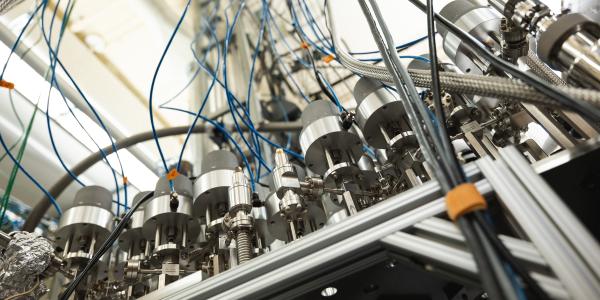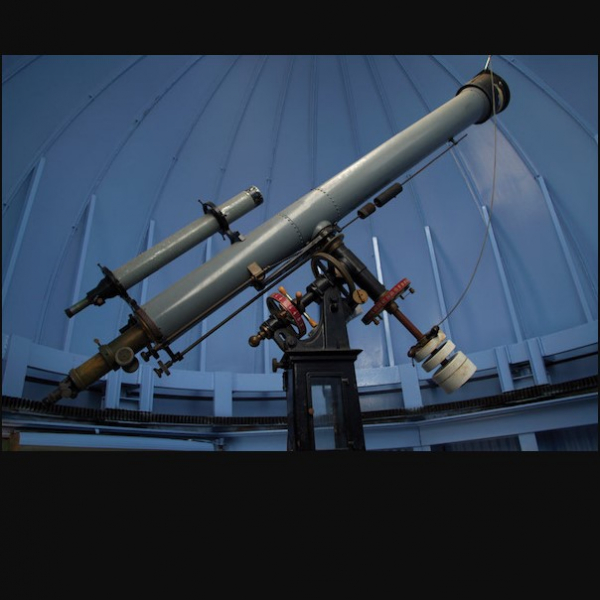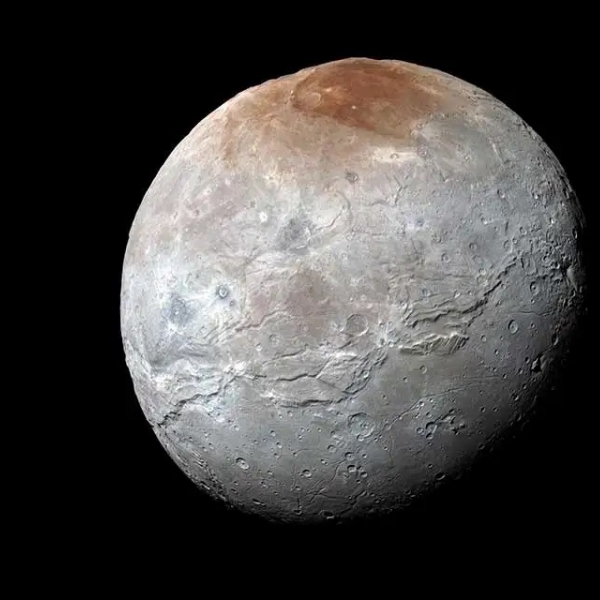Assistant professors Rita Parai and Kun Wang use advanced geochemical methods to explore the evolution of planetary bodies from the formation of the planet to the present day.
Rita Parai and Kun Wang, both assistant professors in the Department of Earth and Planetary Sciences, apply high-precision isotopic measurements to tackle big questions about Earth and its neighborhood: What is the origin of the solar system? How did Earth’s habitability evolve over time, and how will it dynamically evolve in the future? What can isotopes reveal about the evolution of planetary interiors and surfaces? How can isotopic analysis help scientists make sense of the vast differences between Earth and its nearest neighbors, the Moon, Mars, and Venus?
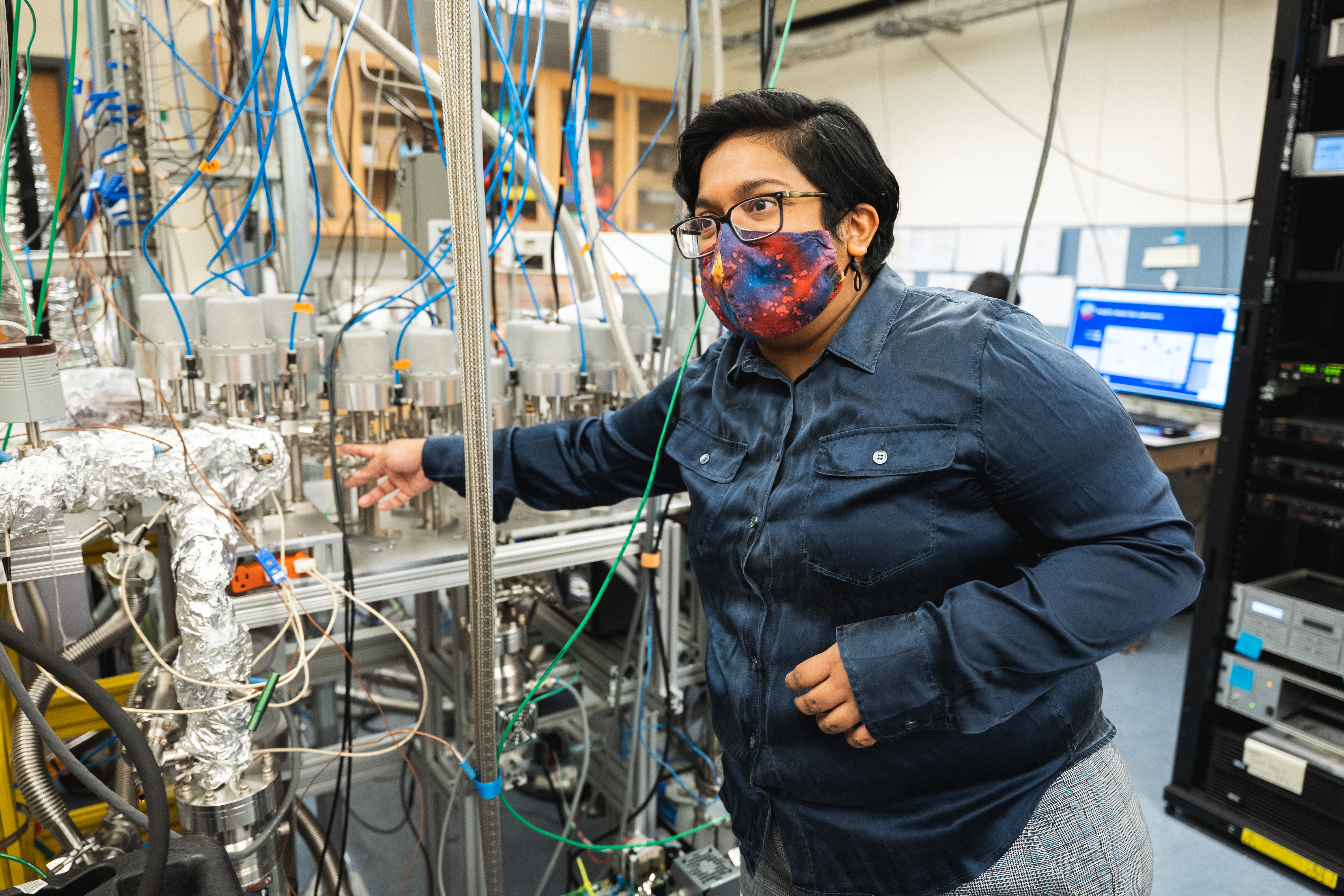
To investigate these questions, Parai and Wang pay particular attention to the movement of volatile elements and compounds such as water, noble gases, and anything else that can be gaseous at regular temperatures and therefore lost during planetary activity. Isotopic fingerprints left on the rock record by those volatile elements are the keys to Parai’s and Wang’s planetary detective work. By analyzing samples from meteorites to volcanoes and all the rocks in between, they can gather information about a planet’s origins, its history, and perhaps its future. Those insights help them and other scientists better understand the solar system and Earth’s place in it.
For Wang, isotopes of the element potassium (K) put a trace on planetary activity all the way back to a planet’s formation, confirming that the Moon was formed by a giant impact and revealing that Mars could never have held onto enough water to support life long-term. Precisely measuring the ratio of different K isotopes provides Wang with reliable evidence of a planet’s volatile history, even from the scant sample material currently available.
Parai takes a multi-pronged approach to figuring out a planet’s life story. She studies noble gas isotopes in volcanic rocks to understand the evolution of Earth’s mantle composition and in terrestrial rocks at Earth’s surface to see the evolution of the atmosphere. By analyzing noble gas isotopes in interior and surface samples, Parai opens a window into volatile element transport for the entire planet over time – something scientists just can’t do with chemical analysis of other volatile elements because of their reactivity.
Long-overlooked K has its day
“As a child, I was super into space and astronomy, and I read lots of science fiction,” Wang recalled. “I begged my parents to get me a telescope, and I remember being so excited when they did.” Now Wang gets to fulfill his childhood dream of studying other planets with the best equipment in the world. “I’ve been very lucky to be in the right place at the right moment in my career,” he observed.
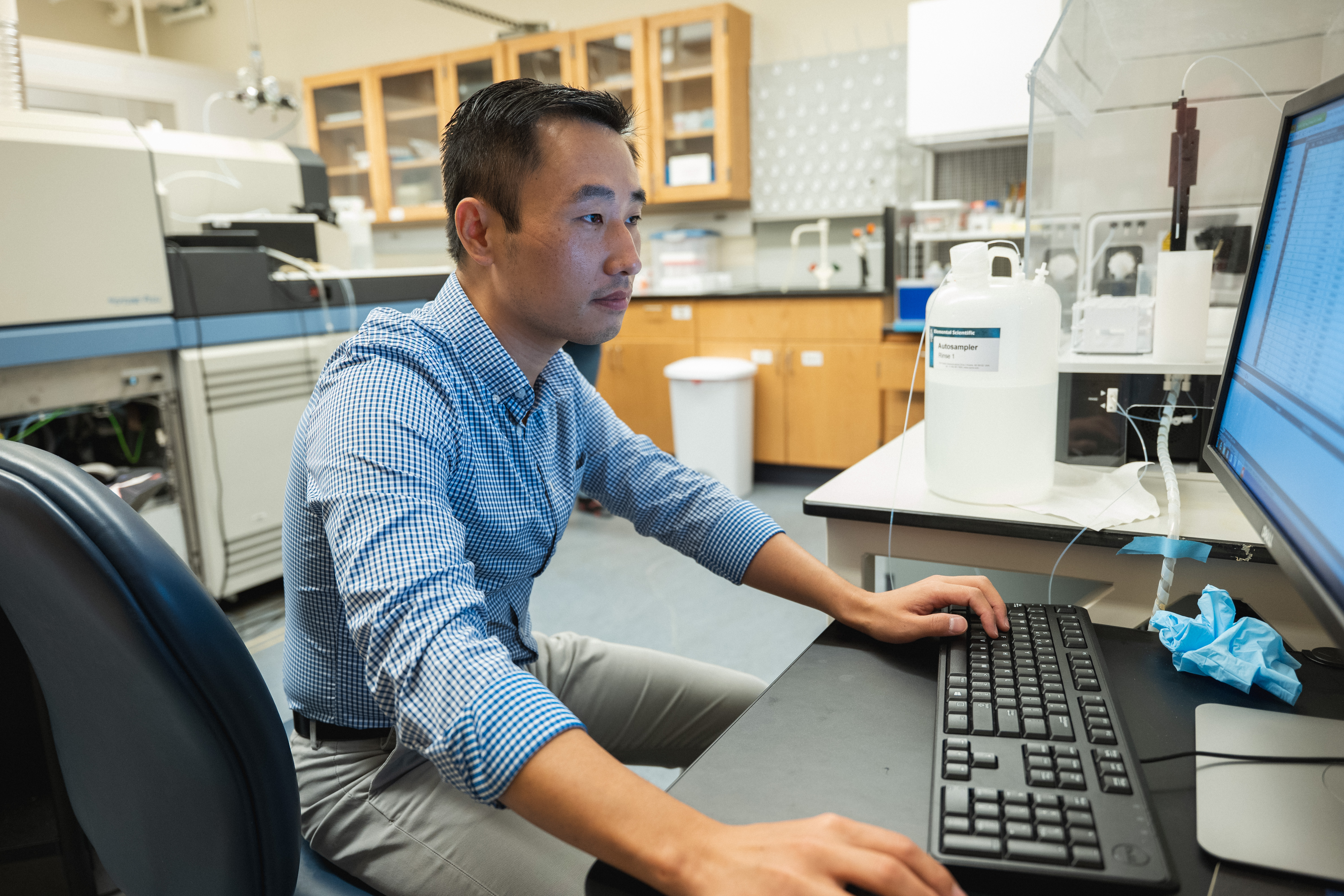
In 2015, Wang developed a method for detecting potassium (K) isotopes with a precision 10 times better than the previous best method. His technique is enabled by technological advances in inductively coupled plasma mass spectrometry (ICP-MS). The cutting-edge ICP-MS equipment housed in Wang’s lab in Rudolph Hall allows Wang and his collaborators to determine – with high sensitivity and precision – just what chemicals are in a given sample. In the last few years, stable potassium isotopes have emerged as promising tracers for studying a variety of Earth and environmental processes, such as continental weathering, clay formation, hydrothermal alteration, oceanic plate subduction, arc volcanism, soil development, and plant growth.
By measuring isotopic ratios using the technique he pioneered, Wang can estimate the presence, distribution, and abundance of volatile elements on different planetary bodies. “Different planets have different formation mechanisms that result in the planets losing different amounts of volatiles. By measuring isotopes, we can trace back the formation mechanism,” Wang explained. The ratio of different potassium isotopes provides stable evidence – an indelible fingerprint – of volatile content, distinct from bulk chemical measurements, which may vary from sample to sample.
Wang has most recently measured the isotopic composition of lunar and Martian samples with remarkable results.
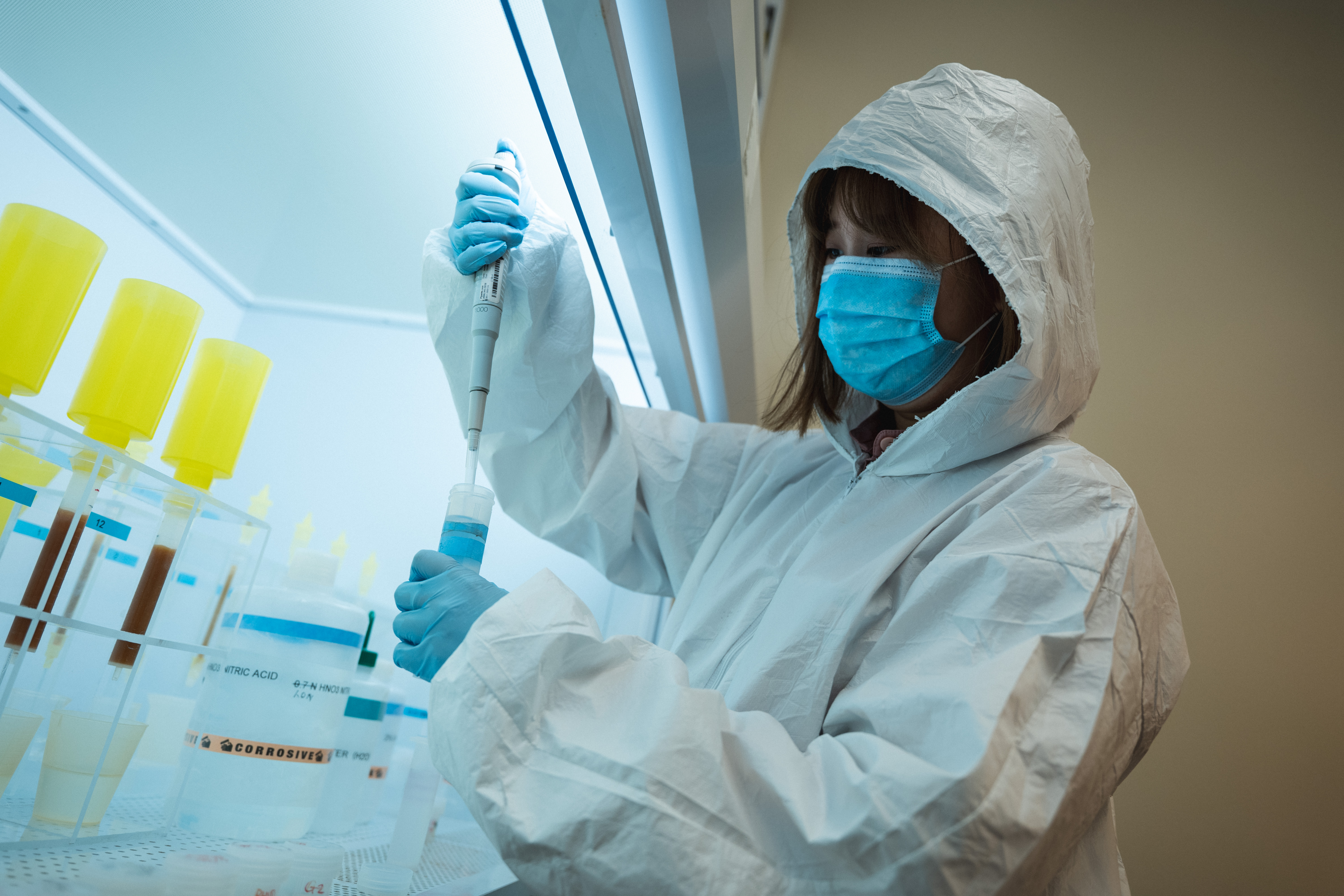
By examining isotopic differences between lunar and terrestrial rocks, Wang solved the “isotopic crisis” that had previously plagued the giant impact hypothesis for the formation of the Moon. In this model, the Moon formed after a giant, violent impact pulverized Earth – “like a sledgehammer hitting a watermelon.” The Moon then formed as the consequence of this giant impact. Wang provided new experimental evidence for this conclusion through an analysis of potassium isotopes in which he found that lunar rocks are enriched in a heavier K isotope than terrestrial rocks.
This year, Wang turned his attention to Mars, weighing in on the perennial question of the red planet’s habitability. Though scientists and a fleet of rovers have found ample evidence for abundant water in Mars’ early history, Wang’s recent analysis of K isotopes in Martian meteorites revealed that Mars had less water to work with from the beginning and, based on a well-defined correlation between body size and potassium isotopic composition, the planet may be just too small to hold onto that essential element for life.
“For the first time, we’ve shown that Mars was more depleted in volatiles, including water, than Earth from its formation. That’s a key point,” Wang said. “When we look at Mars now, we see that it’s much drier than Earth, though there is evidence for water in the past. We used to think Mars was once even wetter than Earth, but our new study shows that’s not the case.”
Wang’s findings have implications for the search for life on other planets, including exoplanets whose habitability may depend on their size as well as on distance from their sun.
A volatile view of noble gases
Just down the hall, Parai’s high-temperature isotope geochemistry lab also boasts facilities you won’t find anywhere else. After becoming interested in noble gas geochemistry and its geological applications as an undergraduate, Parai honed her skills in graduate school and through her postdoctoral experiences. All the while, she was taking notes on how to craft the perfect instrument to do her work. Parai devised an intricate geometry for her unique gas-extraction system, enabling her to build a relatively compact apparatus to process and then analyze samples containing noble gas isotopes.
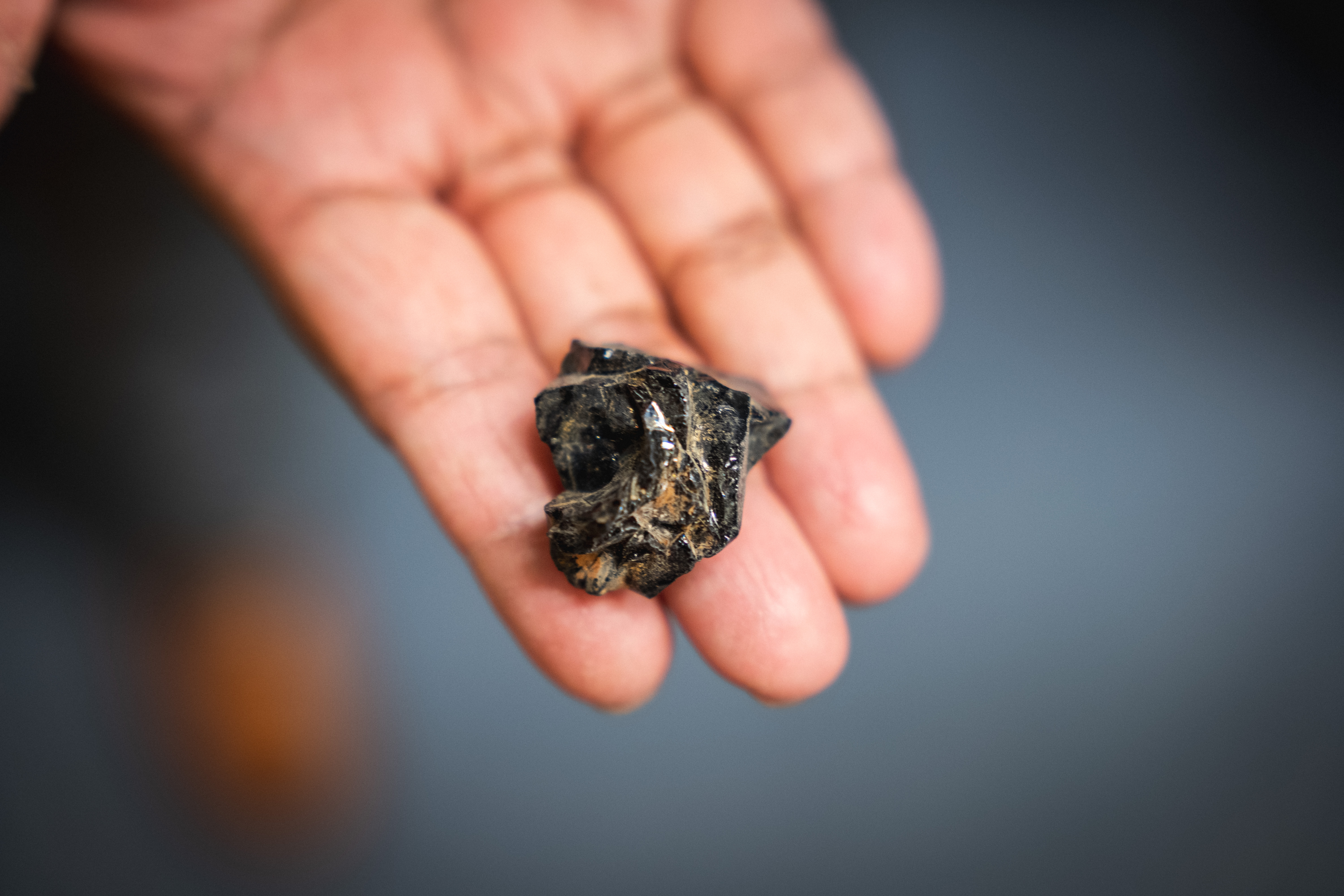
“In my lab, we take natural rock samples – mostly modern volcanic rocks, but also some ancient rocks – and we try to understand different things about Earth history. Specifically, we want to know how Earth got its atmosphere, its oceans, and other features related to habitability,” Parai explained. Parai's laboratory for noble gas isotopic analyses pursues high-precision measurements of isotopes in rocks to better understand the formation and evolution of Earth and other planetary bodies, such as the Moon and Venus.
Parai’s investigations begin with gas extraction, an intricate dance leading to analysis with a mass spectrometer. By crushing rock samples under a vacuum, Parai can collect and purify all the gas trapped inside the rocks. “We want to clean up everything that’s not a noble gas, which are special because they’re chemically inert,” Parai said. After scrubbing out carbon dioxide, water, nitrogen, and all other non-noble elements, Parai cryogenically traps and separates the noble gases. “The cryo-trap is the coolest thing in the lab. Literally. It gets down to 10 Kelvin. We use it to trap all the noble gases except for helium, then sequentially release each noble gas into the mass spectrometer, where we measure isotope ratios.”
Parai’s gas extraction line isn’t the only compact part of her lab. Her mass spectrometer is also small by comparison to other mass spectrometry equipment in Rudolph Hall, with an interior volume of only about three liters. “There’s a reason for that,” Parai said. Quite simply, rocks don’t contain very much noble gas. “When you make these measurements, you’re dealing with sometimes only 50,000 atoms of xenon, which is not a lot! The smaller interior volume corresponds to a more sensitive instrument.” That sensitivity is essential for Parai’s analysis.

Using her customized setup, Parai addresses questions regarding early Earth environments, lunar formation, the origin and evolution of Earth’s volatile budgets, chemical cycling between deep Earth and surface reservoirs, the nature of mantle heterogeneities, and chemical constraints on geodynamics.
Different elements provide different information. For example, in her work on the nature of heterogeneity in Earth’s mantle, Parai measures isotopes of neon and xenon to trace the history of volatile transport in and out of the deep Earth over 4.5 billion years of Earth history. The exchange of volatiles, a process that involves mantle degassing through volcanic activity and regassing through tectonic subduction, determines the surface availability of compounds that are critical to life — such as carbon, nitrogen, and water. “Life on Earth cares about changes in the volatile budget of the surface,” Parai said. “There’s an interplay between what the deep Earth was doing and how the surface environment changed.”
Like Wang, Parai has also turned her attention to Earth’s only natural satellite. Parai’s analysis of the Moon-forming giant impact focuses on Earth’s loss of volatiles during this catastrophic degassing. Studying xenon isotopes and linked radioactive elements has allowed Parai to constrain the timing and nature of volatile loss from early Earth and explore similar losses in the rest of the early solar system.
Please NASA, we want some more
Looking ahead, both Parai and Wang are eagerly anticipating working with new clues in their ongoing efforts to uncover how planetary bodies form and change. While awaiting new samples – from the Moon, Mars, Venus, and beyond – they are preparing the next generation of researchers to tackle unique questions and produce fresh breakthroughs. As Piers Koefed, a postdoctoral researcher working with Wang noted in reference to the team’s work with K isotopes in chondrites, “Like many good cosmochemical problems, more samples and more data, especially of the very high precision variety, are needed to address this fascinating issue!”

Meanwhile, as part of NASA’s Apollo Next-Generation Sample Analysis (ANGSA) initiative, Parai and Wang are contributing their specialized expertise to the questions and samples we have today. The program seeks new insights into Apollo 17 samples gathered in 1972 using the latest analytical tools and methods.
“We now have specimens from the last, untouched batch of lunar samples in my clean lab. We’re measuring the chemical composition, figuring out what they are before we study them in more detail, in preparation for NASA’s next mission to the Moon,” Wang said. Scheduled for launch in September 2024, NASA’s Artemis mission aims to land humans on the Moon for the first time in over 50 years and bring back new samples. “We’re already preparing for it, training young scientists with this last batch of samples before older scientists retire. So we will be all ready to study the new returned samples when that happens,” Wang added.
Parai is also working on the analysis of the newly released lunar samples, applying her expertise in gas extraction. She and her research lab assistant, Julian Rodriguez, are part of a team at WashU that designed and constructed an ultra-high vacuum apparatus to collect and transfer gases released from the sealed lunar core for high-precision analyses of oxygen, nitrogen, noble gases, and other organics.
Parai’s next big frontier is not the Moon, but rather Venus. The Venusian atmosphere is drastically different from Earth's, and helium and argon isotopic ratios measured by upcoming NASA missions can provide tantalizing clues about how Venus may have evolved and diverged from its sister planet, Earth. As part of the science team for a hypervelocity gas sampling probe proposal, Parai is working on numerical modeling of outgassing and atmospheric loss to provide a map for interpreting the next generation of atmospheric noble gas measurements. She is particularly excited at the prospect of studying samples returned from Venus, which she’ll be able to analyze in her lab, and comparing these to in-situ measurements directly from the inhospitable planet.
Closer to home – in space, if not in time – Parai and Wang are jointly working with undergraduate researcher Judy Zhang on questions related to Earth’s paleoclimate and continental weathering. Potassium isotopes analyzed in Wang’s lab can reveal the weathering intensity variation over time based on isotopic signatures recorded in seawater. Parai’s noble gases offer a different perspective. Analysis of geochemically weird volcanic rocks reveal a strong signature of material recycled from the surface into the mantle, and Zhang will investigate whether surface volatiles were efficiently recycled in the deep past.
“There are so many cool things going on in isotope geochemistry right now, and there’s lots more to come,” Parai said. “Our high-precision equipment and analytical capabilities have developed to a point where we can actually take advantage of the unique conditions we encounter in various settings. Every new study, every new angle tells us something more about Earth, how our solar system formed, and what other kinds of worlds might be out there.”

